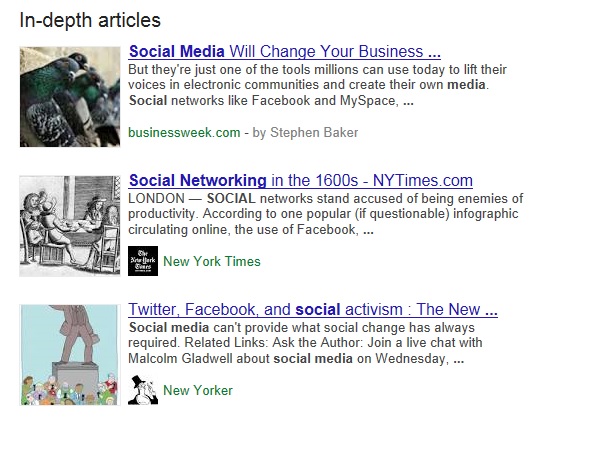Shortly after Google+ was launched back in 2011, Google introduced two tags to be used to help form a verified link between websites and Google+: Rel=Author and Rel=Publisher. The first, Rel=Author, has garnered increasing attention and adoption over the past two years. This tag allows content creators to form a connection between their individual articles and their personal Google+ profile which has been dubbed Authorship by Google. If you are a writer and haven’t set up your rel=author tag yet, Google has provided an easy walkthrough on how to do this.
For webmasters that want to form a verified connection overall between their website and Google+ the second tag, Rel=Publisher, is the avenue to provide just that. This tag has seen a much smaller adoption rate when compared against Rel=Author, and its name may have something to do with that. The “Publisher” terminology is a misnomer and while one might think the tag is relevant only to publishing-focused websites that produce a lot of content, the truth is that the tag can be used by any business or brand website that has a corresponding Google+ page.
Implementing the Rel=Publisher Tag
The tag is relatively easy to setup, and only requires a few links added to both your website and Google+ Page. First and foremost, if your website doesn’t have a corresponding Google+ page supporting it, you’ll need to create a page. Next, you’ll need to add a link from the page to the website. This is completed through the following actions: go to your Google+ page, click “Manage Your Page” and then “Add Your Website”. When completed the About section of your page should have a Links area that look like this:
google-rel-publisher-1Next, you’ll need to edit your site to complete the connection. This can be done one of two ways. First, you can add a link tag in the Head section of your website with the following setup:
<link href=”[Your Google+ Page URL]” rel=publisher />
The second, and arguably easier setup, is to modify the link you should have on your website pointing to your Google+ page. Whether that link is a text link or an icon link, the basic link setup remains the same:
<a href=”[Your Google+ Page URL]” rel=”publisher”>Google+</a>
Once you’ve completed this update on the site, you can verify that the connection has been completed by checking your website against Google’s Rich Snippet Tool and you should see the Publisher markup has been verified. When you see the verification (which should be instantaneous) there is nothing else you need to do, but sit back and wait for Google to officially recrawl your page and index this connection
google-rel-publisher-2The Benefits of Rel=Publisher
At the moment, there is limited perceived value that Rel=Publisher provides a website. Currently, its biggest contribution to a website is that when branded search queries are made in Google, the Knowledge Graph for that query should display a widget for that brand’s corresponding Google+ page which includes:
- The name of the Google+ Page
- How many followers the page has
- The last update from the page and when
- Option to start following the page, if the user is logged in
For businesses that have a physical location and have that data properly filled out on their corresponding Google+ page, having the Rel=Publisher tag implemented may also help to ensure that this data is correctly displayed in the Knowledge Graph.
Other than this benefit, there remains only speculation as to what the Rel=Publisher tag can or will do for a website. Google has been increasing the value they put behind the Rel=Author tag as part of their algorithm for ranking content, and there is speculation that the Rel=Publisher tag will eventually be used to further refine Google’s SERPs. The Rel=Publisher tag may also be used as a unifying factor between multiple Rel=Author tagged profiles on a single domain, meaning that the more high value authors are associated with a website, the better that site may do on a whole in search.
For now, remember that your website should be correctly using both Rel=Publisher and Rel=Author tags if applicable. Think of the Rel=Publisher tag as a yellow pages listing for a business, and the Rel=Author tag as business cards for individuals. Both serve different purposes but are both important for the business to succeed.

 Your Content Strategy
Your Content Strategy
